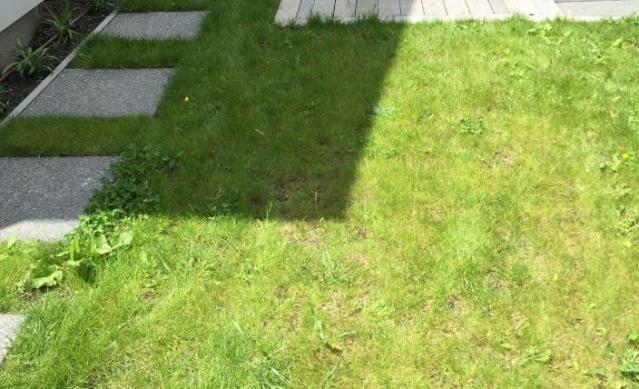Problem Solving
Why do I have grassy weeds or large clumpy grasses on my lawn?
The appearance of unwanted grass types is referred to as a presence of foreign grasses. Foreign grass is a wild form of grass that invades lawns and spoils the even and consistent colour and texture. Common foreign grasses found in the lawn are Poa Annua, Summer Grass, Crow foot, Paspalum, and Twitch.
How do I get rid of invasive, persistent weeds?
Weed seeds embedded in new topsoil, carried by the wind and in bird droppings are invariably a threat to the health and appearance of your lawn if left unchecked. Unsightly, invasive weeds can choke the desired grass species whilst others, such as the prickly Onehunga weed are a plain nuisance and spoil the enjoyment of your lawn. In warmer areas Kikuyu grass can be highly invasive and is difficult to control.
Complete area spraying and removal of dead tendrils is often the only way to overcome this problem. Our technicians can identify problem weeds in your lawn and create a spray programme to eliminate most of them. Our exclusive "Lawn Doctor" machine applies selective sprays without spray drift.
Flat weeds love short grasses and thrive in it - Moss also is much more invasive in closely cut areas. If you mow your lawns longer, it doesn't mean more often, but it does mean less weeds and healthier grass. Keep your mower blades sharp, this will ensure you don't end up "tearing your grass off"
Why do I have dry dead or brown patches on my lawn?
There are various causes of dead patches in your lawn. It is often an indication of burrowing insect pests destroying the root systems. Differing soils and climates can also encourage pests, which if left untreated will ruin your lawn. There are many types of lawn pests, including Grass Grub, Porina and Black Beetle. They strike at different times of the year and they can devastate a good lawn in a few weeks.
Your LawnFix technician is trained in the identification and eradication of insect pests. We can provide you with a prevention programme or can deal to the little beasts if they are already at work.
Another cause of brown patches are fungal diseases. Some diseases just turn up unexpectedly – brown patches or reddish veins through the grass may appear. Often greyish dull areas also become evident – fungal diseases often create these symptoms and require identification and specific treatment. Some lawn diseases are due to malnutrition and the lawn requires little more than regular feeding. Contact us for a free appraisal of your lawn.
If you use a mulching mower be careful that the thatch doesn’t build up too much as this can also cause hydrophobic or dry patches – a correctly balanced fertiliser programme will help prevent this and take into account mulching or catching mowing.
How do I prevent lawn flooding & puddles?
If this is happening on your lawn, there isn’t much you can do about it in the short term, other than making sure your drains and sinkholes are clear and free of debris.
Good drains and leveling out hollows will help prevent puddles in the future.

